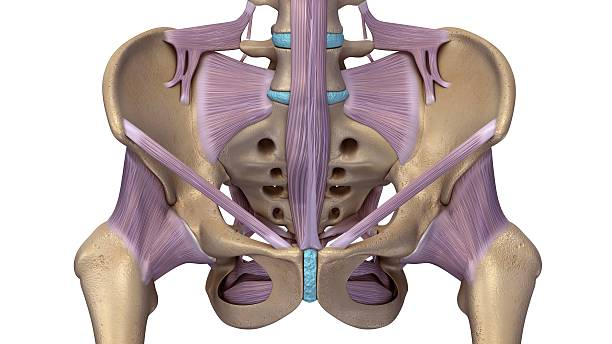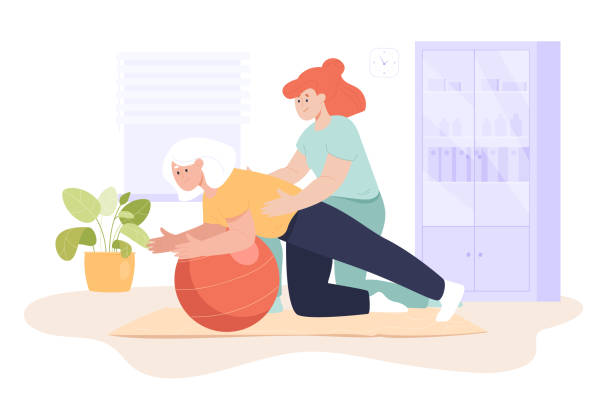Fitness
Pelvic Muscle Strengthening Tips for Seniors
As we age, maintaining strength and functionality in all regions of the body becomes increasingly important for general well-being and quality of life. The pelvic muscles are one of the most ignored areas, although they play an important part in core stability, bladder control, and even sexual function. In this article, we will discuss the importance of pelvic muscle strength for seniors, as well as efficient approaches and exercises for maintaining these muscles’ strength and resilience. From easy daily routines to specialized workouts, we’ll learn about practical ways for seniors who want to preserve their independence, mobility, and confidence far into their golden years. Join us as we provide seniors with the knowledge and tools they need to strengthen their pelvic muscles and live a life of vitality and comfort.

Understanding Pelvic Floor Muscles
The pelvic floor muscles support the pelvic organs, which include the uterus, vagina, bladder, and rectum. These muscles control the bladder and bowel, perform sexual functions, and support the pelvic organs.
Role and Function
The pelvic floor muscles help maintain continence, support the pelvic organs, and contribute to sexual function. They help to control the flow of urine and feces, and they also play a role in sexual arousal and orgasm. In women, these muscles support the uterus and vagina.
Effects of Aging on Pelvic Muscles
As people age, their pelvic floor muscles might weaken, causing a range of difficulties. This can be caused by a multitude of circumstances, including childbearing, obesity, chronic constipation, and pelvic surgery. Weak pelvic floor muscles can cause incontinence, pelvic discomfort, and sexual dysfunction.
Common Pelvic Floor Disorders
Pelvic floor dysfunction is a prevalent condition that affects both men and women. Some of the most prevalent pelvic floor problems are:
- Urinary incontinence is the involuntary spilling of urine.
- Fecal incontinence is the involuntary flow of feces.
- Pelvic organ prolapse occurs when one or more of the pelvic organs (bladder, uterus, or rectum) descend and bulge into the vagina.
- Chronic pelvic pain is a pain in the pelvic region that lasts more than six months.
To summarize, understanding the nature and function of the pelvic floor muscles, the impact of aging on these muscles, and prevalent pelvic floor diseases is critical for seniors seeking to maintain excellent pelvic health. Strengthening these muscles with frequent exercise

Effective Pelvic Floor Exercises
The pelvic floor muscles support the bladder, rectum, and uterus. Strengthening these muscles is critical for seniors to avoid incontinence and pelvic organ prolapse. Here are some helpful pelvic floor exercises for seniors to help strengthen their muscles.
Kegel Exercises
Kegel exercises are a popular and efficient method for strengthening the pelvic floor muscles. To do Kegels, elders can follow these steps:
- Sit or lie comfortably.
- Squeeze the pelvic muscles as if attempting to stop the flow of pee.
- Hold the contraction for five seconds, followed by five seconds of relaxation.
- Repeat the exercise 10-15 times in each session.
Bridges
Bridges are another useful exercise for strengthening the pelvic floor muscles. Seniors can perform bridges in the following steps:
- Lie on your back, knees bent, and feet flat on the ground.
- Squeeze the buttock muscles and raise the hips off the ground.
- Hold the position for five seconds, then descend your hips to the ground.
- Repeat the exercise 10-15 times in each session.
Squats
Squats are an excellent exercise for developing overall lower-body strength, including the pelvic floor muscles. To do squats, elders can follow these steps:
- Stand with your feet shoulder-width apart.
- Lower the body as if sitting on a chair, with the back straight.
- Hold the stance for five seconds before standing back up.
- Repeat the exercise 10-15 times in each session.
Happy Baby Pose
Happy Baby practice is a yoga practice that helps to strengthen the pelvic floor muscles. To perform the Happy Baby Pose, elders can follow these steps:
- Lie on your back, knees bent, and feet flat on the ground.
- Lift your legs and grasp onto the outside of your feet.
- Pull the knees towards the armpits and press the feet up.
- Hold the position for 30 seconds, then release.
- Repeat the exercise three to five times per session.
Diaphragmatic Breathing
Diaphragmatic breathing is a relaxation method that can help to relieve tension in the pelvic floor muscles. Seniors can perform diaphragmatic breathing by following the steps below:
- Lie on your back, knees bent, and feet flat on the ground.
- Place one hand on the chest, and the other on the stomach.
- Inhale deeply, feeling your stomach rise.
- Exhale slowly, feeling your stomach drop.
- Repeat the workout for 5-10 minutes each session.
Including these movements in a regular exercise plan will help seniors strengthen their pelvic floor muscles and avoid pelvic floor weakness. Those with significant pelvic floor weakness may require biofeedback or physical treatment.

Professional Care and Treatments
When to See a Specialist
If you are having pelvic floor dysfunction or any form of incontinence, you should consult with a healthcare practitioner. A physical therapist, pelvic floor physical therapist, gynecologist, or urogynecologist can assist with diagnosing and treating pelvic floor problems. They can also recommend you to a specialist if needed.
Pelvic Floor Physical Therapy
Pelvic floor physical therapy is a non-invasive therapeutic method for strengthening the pelvic floor muscles. This sort of therapy is effective for stress incontinence, fecal incontinence, and urine incontinence. A physical therapist will collaborate with you to create a tailored treatment plan, which may involve pelvic floor muscle training, biofeedback, and physiotherapy.
Surgical Options
In some circumstances, surgical intervention may be required to correct pelvic floor dysfunction. Surgery may be required if other therapies have failed or if the problem is severe. Surgical treatments include repairing or replacing damaged tissue, as well as implanting a device to support the pelvic organs.
It is critical to review all treatment choices with your healthcare professional to identify the best course of action for your specific requirements. With the proper care and treatment, seniors can strengthen their pelvic muscles and enhance their overall quality of life.

Lifestyle Modifications for Pelvic Health
The pelvic floor muscles are vital for bladder and bowel control, but their strength decreases with age. However, elders can adopt many lifestyle changes to improve their pelvic health.
Dietary Changes
Dietary adjustments can aid in improving stool consistency and preventing constipation, which can lead to intestinal leaks or painful constipation. To avoid constipation, seniors should eat a high-fiber, fluid-rich diet. Seniors should also avoid coffee, alcohol, and spicy foods, which can irritate the bladder and lead to leaks.
Regular Physical Activity
Regular physical activity can help strengthen the pelvic floor, abdominal, and inner thigh muscles. Seniors should strive to do at least 30 minutes of moderate-intensity exercise most days of the week. Walking, swimming, and cycling are excellent activities for seniors.
Weight Management
Maintaining a healthy weight is critical for pelvic health since excess weight can put a strain on the pelvic floor muscles, leading to leaks and heaviness. To maintain a healthy weight, seniors should eat a well-balanced diet and engage in frequent physical activity.
Overall, following these lifestyle changes can help seniors improve their pelvic health and avoid problems including bladder and bowel control, damage to nerves, irritable bowel syndrome, leaks, and lower back discomfort.
Conclusion
Finally, addressing pelvic muscle strength is an important aspect of healthy aging for seniors. By introducing focused workouts and attentive behaviors into their daily routines, seniors can improve their core stability, bladder control, and general quality of life. The benefits go beyond physical health, including increased confidence, independence, and even sexual function. As we’ve shown in this article, age should not be a barrier to maintaining pelvic muscle strength; rather, it should act as motivation to engage in one’s own health. With effort and regularity, elders can improve their pelvic muscles and live a more active, pleasant, and meaningful life for years to come. Remember, it’s never too late to start focusing on your pelvic health and enjoying the benefits of aging well.
Trusted Health, Wellness, and Medical advice for your well-being


